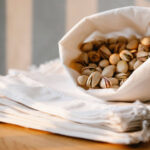Description
- Grain: Finger millet grains are tiny, reddish-brown seeds that are packed with nutrients. They are one of the richest sources of calcium among plant foods and also contain significant amounts of iron, protein, fiber, and other essential nutrients.
- Flour: Finger millet flour, also known as ragi flour, is a gluten-free flour that is gaining popularity due to its nutritional benefits. It has a slightly earthy flavor and can be used in various culinary applications. Ragi flour is commonly used to make traditional flatbreads, porridge, baked goods, and even baby food due to its digestibility and nutrient density.
- Flatbreads: In South India, finger millet flour (ragi flour) is commonly used to make nutritious flatbreads called ragi roti or ragi dosa. These flatbreads are rich in fiber and protein, making them a healthy alternative to wheat-based products.
- Porridge: Finger millet is often used to make a thick porridge-like dish, especially in African countries where it is a staple food. The porridge, known as “ugali” in East Africa or “kodo ko jaanr” in Nepal, is cooked with water or milk and served as a nutritious breakfast or main meal.
- Beverages: Finger millet can also be used to make traditional beverages. In parts of India, a fermented drink known as “ragi malt” or “ragi java” is made from finger millet flour. This beverage is nutritious and rich in probiotics.
- Snacks: Finger millet can be popped similarly to popcorn and seasoned as a crunchy snack. This is a popular way to consume finger millet in some regions.
- Nutritional Benefits: Finger millet is highly nutritious and considered a superfood due to its rich nutrient profile. It is particularly valued for its high calcium content, which is beneficial for bone health, and its iron content, which helps prevent anemia. Finger millet is also low in glycemic index, making it suitable for people managing blood sugar levels.














Reviews
There are no reviews yet.